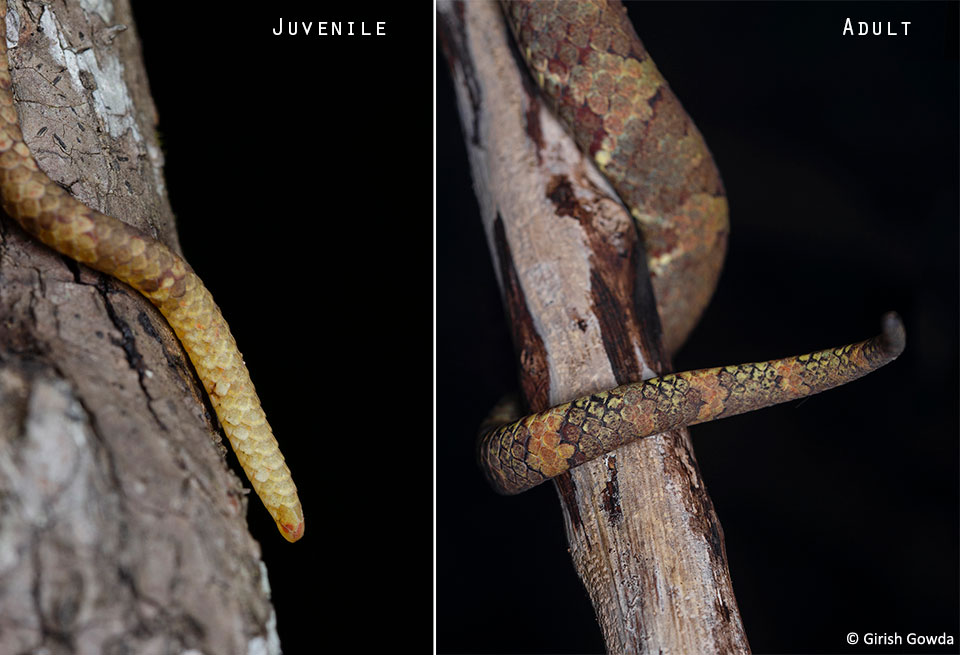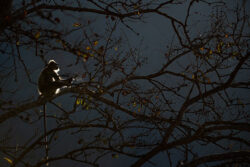One of the iconic and most beautiful snakes of India is the Malabar Pit Viper (Craspedocephalus malabaricus, formerly Trimeresurus malabaricus). It is one of the snakes everyone wishes to see when they visit the Western Ghats in Karnataka. What makes Malabar Pit Vipers interesting is the fact that they occur in different colours or morphs. They are a highly variable and diverse species with respect to colour. Some of the commonly seen colours are brown, green, yellow, orange, etc with black and brown spots in various zigzag patterns across the body.
This variation in a single species is called polymorphism. Scientists and researchers are yet to come up with a definitive answer on why there is such a diversity of colours in this species.
Here are some photographs of the many morphs of this species that I have compiled over the course of eight years in the forests of Agumbe and Sharavathi.

A compilation of different morphs from Agumbe and Sharavathi
There are no conclusive studies explaining why there is such degree of variation in colour in this single species. Some speculate that the patterns on the body of the pit vipers help them blend in with their habitat.

Some head shots showcasing the colours in detail

Closeup of midbody scales of Malabar Pit Vipers of different sizes

Photographs of courting vipers, one from their natural habitat and one from the roof of a house
Males are generally smaller than females in this species. Some researchers believe that the variation in their colour plays a role in sexual selection too.

Juvenile pit vipers
All the juvenile pit vipers I have observed have been pale brown in colour. It is believed that they gradually change colour as they moult and the change is according to the micro habitat they live in to blend well with the surroundings.

Tails of a juvenile and adult Malabar Pit Viper
Even the tail colour changes as they grow! Juveniles with light-coloured tails adopt a mix of different colours as they moult. This is a common trait seen in most of the other pit vipers species found in Western Ghats.

A pit viper with a green morph lies in ambush
Malabar Pit Vipers are ambush predators; they stay put at one place and wait for prey. Some colours, like this green morph, helps them blend well with the background and also helps them escape from birds of prey.

A yellow morph in its typical ambush pose right next to a forest path in Agumbe. They are easily spotted due to the bright colour.

Two different morphs seen sharing and interacting in the same habitat
The photograph above shows a brown morph which was trying to chase away the yellow morph for a good spot during the monsoon, as Malabar Gliding Frogs were seen in high numbers around that twig. The move was successful for the brown morph. This was photographed high up on a tree around 20ft from ground.

A yellow morph from Sharavathi valley

An orange morph from Agumbe
Without a doubt the yellow and orange morphs are the most attractive of them all!
Malabar Pit Vipers are threatened by habitat loss and their numbers have been declining over the years. We don’t know much about this fascinating species. While there are a few scientists and researchers working on answering many questions related to them, polymorphism will be one tough question to answer.
Hoping to find some answers soon!





Instagram
junglelodgesjlr